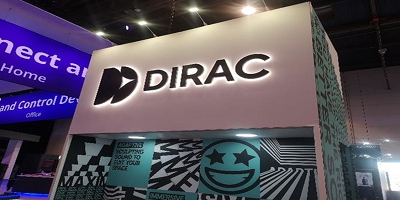The increase in US-China conflicts has exacerbated the divergence of global technology, with the two super-powers each operating on their technology systems. Although the divide could deter cross-border development and business growth between rivals, there are still opportunities for countries in-between—like those in Southeast Asia and Europe.
The Swedish Dirac is such an example. The 15-year-old company has licensed sound visualization to a smartphone, home entertainment, AR/VR, automotive, and other companies where the sound is important. In an interview with TechCrunch, its founder and chief executive Mathias Johansson told TechCrunch that the geopolitical uncertainties “have not affected the company at all.
Headquartered in the university town of Uppsala, Sweden, Dirac has deep relations with China, offering solutions to the country’s smartphone giants from Huawei, Oppo, Xiaomi, and Africa-focused Transsion. More than 50 percent of its sales come from China today.
Dirac’s interest in China stems partly from the earlier obsession of the founder with the region. When Johansson visited China for the first time in his Ph.D. program two decades ago, he was struck by the “rapid evolution” of the technology industry there.
“The audio industry has put a lot of production first in China, but more and more into growth and design. I noticed that this is a sector that is key to the entire consumer electronics ecosystem,” said Johansson.
Since then the entrepreneur has traveled to Asia particularly Japan and China, where electronics has flourished. In 2010, he recruited Dirac’s first China boss, Tony Ye who worked previously for the Swedish software company IAR Systems in Shanghai. At the time, the groundbreaking iPhone 4 was making waves all over the world, but Johansson and his group were still buzzing about China.
“We thought that China would eventually become the pioneer in smartphones. We thought it was going to be a different market with Android and Weapons Processors [China]. But we just went in and concentrated on the market. And we figured [Chinese] would be hungrier, more eager to try new stuff, simply because they were outsiders just as we were pioneers,” said the founder.
“It turned out to be a good bet.”
While the Chinese government has promoted technical autonomy, national efforts emphasize strategic areas such as 5G and AI. Imported technologies are also in demand in smaller and less politically charged regions. These approaches are often cutting-edge and based on years of intensive research, but they are too time-consuming for large companies to spend money and time on. This is valid for some growing points solutions (see Imint’s TechCrunch profile, also Uppsala-based company) or advanced sound enhancement for Dirac.

Dirac manages its cash flow by selling its intellectual property to consumers and charging licensing fees per unit of equipment delivered. It also implements a B2B2C model, whereby the end-user can upgrade the device’s audio system, i.e. the speaker, by paying a charge which is then split between Dirac and its customer, i.e. the device manufacturer. Its new big-name client is the Chinese electric carmaker BYD, a transaction that the company sees as a significant move forward in its automotive aspirations.
“Traditional manufacturers are being challenged and the entire ecosystem is changing,” said Johansson. “With software updates, cars are becoming a very different situation. They’re getting a lot more like cell phones and a lot more software-centric. The whole multimedia element and the auditory experience in cars are now becoming almost the most crucial component of the vehicle because the sound is so low, the car is so quiet, and you could be driving a self-driving car. The audio experience you’re going to get from cars will be excellent in a couple of years.”
